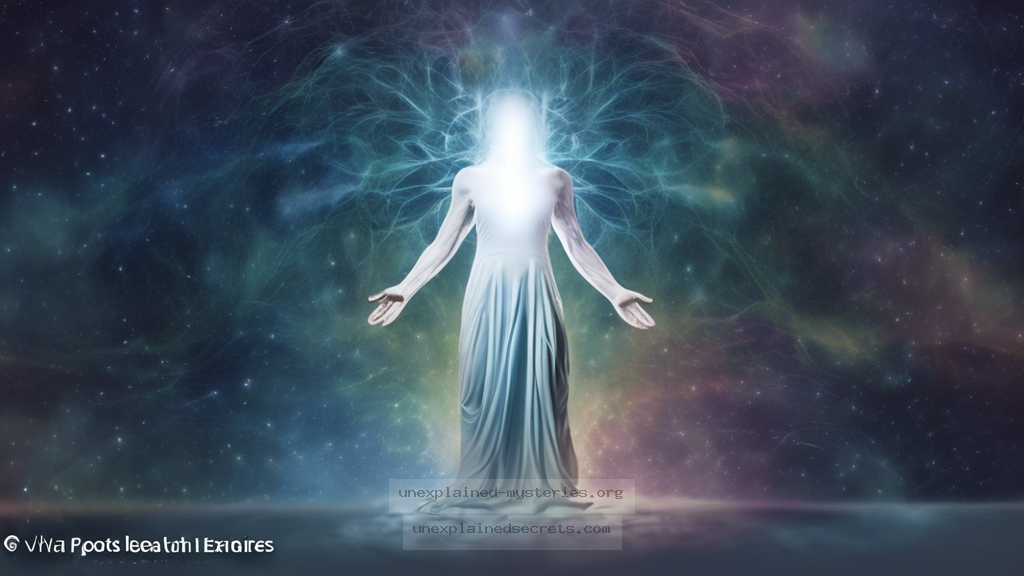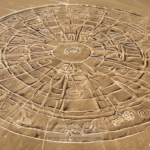What Happens to Consciousness During a Near-Death Experience?
What Happens to Consciousness During a Near-Death Experience?
The phenomenon of Near-Death Experiences (NDEs) has intrigued researchers, spiritual seekers, and the general public for decades. What happens to our consciousness when we find ourselves on the precipice of death? This question matters not only from a scientific perspective but also from a philosophical and spiritual one. Many individuals who have experienced NDEs report similar phenomena, raising questions about the nature of consciousness, the afterlife, and what it means to truly live. This post aims to delve deep into the enigma of consciousness during NDEs, drawing on historical accounts, scientific research, and personal testimonies.
Understanding Near-Death Experiences
NDEs are typically described as profound psychological events that occur to individuals who have come close to death or who have been clinically dead for a short period. Common elements in these experiences include feelings of peace, out-of-body sensations, moving through a tunnel, encountering bright lights, and meeting deceased loved ones. Although the exact mechanics of NDEs remain elusive, they are often categorized into several stages or components. The International Association for Near-Death Studies (IANDS) provides a widely accepted framework for understanding these experiences.
- Out-of-body experiences
- Tunnel experience
- Encountering beings of light
- Life review
- Feelings of unconditional love
A Brief Historical Context
The concept of NDEs is not a modern phenomenon; reports of similar experiences can be traced back to ancient cultures and religious texts. In the Bible, for instance, there are accounts of people who were believed to have experienced the afterlife. Similarly, in Hindu and Buddhist traditions, the idea of transcending physical existence is prevalent. However, the term “Near-Death Experience” was popularized in the 1970s by Dr. Raymond Moody, whose book “Life After Life” brought significant attention to the subject.
Since then, numerous studies have been conducted, and the phenomenon has gained traction within both medical and spiritual communities. The historical context is essential for understanding how societal beliefs shape individual interpretations of these experiences.
Core Concepts and Theories Behind NDEs
There are various theories that attempt to explain NDEs, ranging from psychological to physiological perspectives. Some of the core concepts include:
- Physiological Theories: Some researchers suggest that NDEs are a result of the brain’s response to extreme stress, lack of oxygen, or chemical changes during traumatic events.
- Psycho-spiritual Theories: Others argue that NDEs provide a glimpse into a higher level of consciousness or even an afterlife, suggesting that they are spiritual awakenings rather than mere biological responses.
- Neuroscientific Perspectives: Some studies have examined brain activity during cardiac arrest, revealing that certain areas of the brain may become hyperactive, potentially leading to vivid hallucinations or altered perceptions of reality.
- Endorphin release may explain feelings of peace.
- Neurochemical changes could cause out-of-body sensations.
- Transcendence is often framed within cultural contexts.
Real-World Examples and Documented Cases
Numerous documented cases provide insight into the consistent themes and experiences associated with NDEs. One famous example is the case of Dr. Eben Alexander, a neurosurgeon who experienced a profound NDE while in a coma due to bacterial meningitis. In his book, “Proof of Heaven,” he describes an experience that challenges conventional understanding of consciousness and brain function.
Another notable account is that of Anita Moorjani, who, after battling terminal cancer, reported a life-changing NDE that led to her recovery. She describes feeling unconditional love and a sense of interconnectedness with all beings, which transformed her perspective on life significantly.
Scientific Research and Evidence
Scientific inquiry into NDEs has expanded over the past few decades, leading to various studies that seek to understand these experiences better. A significant study conducted by Dr. Sam Parnia and his team examined cardiac arrest patients and their experiences during resuscitation. The research aimed to determine if consciousness can exist independently of the brain during clinical death.
In the study, some patients reported detailed experiences, including observations of their surroundings while they were technically “dead.” The findings raised profound questions about the nature of consciousness and its relationship to the physical brain. Despite the compelling nature of these accounts, critics argue that such experiences can be explained through physiological processes.
Practical Implications and Evidence
The implications of NDEs extend beyond curiosity; they can influence how individuals perceive death, spirituality, and their own lives. Many people who have had NDEs report decreased fear of death and a greater appreciation for life. This shift in perspective often leads to transformative experiences, including changes in priorities, relationships, and even life purpose.
Furthermore, the growing body of research surrounding NDEs has begun to impact medical practices, particularly in end-of-life care. Hospitals are increasingly recognizing the importance of addressing not only the physical but also the emotional and spiritual needs of patients facing death, leading to more compassionate and holistic approaches.
- NDEs can vary widely between individuals.
- Scientific understanding is still evolving.
- Personal interpretations are often influenced by cultural backgrounds.
Alternative Perspectives on NDEs
While many individuals interpret NDEs as evidence of an afterlife or spiritual awakening, others remain skeptical. Some psychologists suggest that NDEs could be a product of the brain’s coping mechanisms, providing comfort during traumatic experiences. This perspective aligns with the idea that our interpretations of such events are shaped by our beliefs, cultural backgrounds, and psychological states.
Additionally, various religious and spiritual traditions offer different interpretations of NDEs. For instance, some religions view these experiences as a glimpse into heaven or the afterlife, while others see them as a natural part of the cycle of life and death. This divergence highlights the complexity of human experience and the multifaceted nature of consciousness.
Common Misconceptions and Clarifications
Several misconceptions surround NDEs that can lead to misunderstandings. One common myth is that all NDEs are universally positive or transformative. While many individuals report uplifting experiences, some describe distressing or negative encounters, which can lead to significant psychological challenges.
Another misconception is that NDEs are entirely consistent across cultures. While there are common themes, the specifics can vary greatly based on individual experiences and cultural contexts. Understanding these nuances is crucial for a comprehensive appreciation of NDEs.
Best Practices for Investigating NDEs
For those interested in studying NDEs, it is essential to approach the subject with an open yet critical mindset. Here are some best practices:
- Conduct qualitative interviews: Engage with individuals who have experienced NDEs, allowing them to share their stories in their own words.
- Collaborate with interdisciplinary teams: Engage with professionals from psychology, neuroscience, and spirituality to gain a holistic understanding of the phenomenon.
- Stay updated on research: Follow ongoing studies and literature in the field to remain informed about new findings and perspectives.
- Attend conferences focused on consciousness studies.
- Participate in discussions with both skeptics and believers.
- Analyze cultural influences on NDE interpretations.
Future Developments and Ongoing Research
As interest in NDEs continues to grow, so does the potential for future research. Advances in neuroscience may provide new insights into the mechanisms of consciousness during extreme conditions. Researchers are exploring brain imaging technology to study the brain’s activity during cardiac arrest, which could yield significant findings regarding the nature of consciousness.
Moreover, interdisciplinary collaborations are essential for deepening our understanding of NDEs. By combining perspectives from science, spirituality, and psychology, researchers can develop a more comprehensive framework for understanding these mysterious experiences. Ongoing studies, such as those led by IANDS and various universities, promise to shed more light on this fascinating topic.
Conclusion
The question of what happens to consciousness during a Near-Death Experience remains one of the most captivating mysteries in the realms of science and spirituality. Through historical accounts, scientific research, and personal testimonies, we have only scratched the surface of understanding this complex phenomenon. While theories and interpretations vary widely, one undeniable truth persists: NDEs have the power to transform lives, reshape belief systems, and challenge our understanding of consciousness itself.
As we continue to explore this enigmatic territory, we must embrace the diversity of perspectives and remain open to the profound implications these experiences hold for humanity. Whether viewed through a scientific lens or a spiritual one, NDEs invite us to ponder the deeper questions of existence, life, and what lies beyond.
Other Articles
Recent Posts
- What Happened to Flight MH370? The Conspiracy Theories That Still Haunt Us
- What Secrets Lurk Within the Walls of the Infamous Trans-Allegheny Lunatic Asylum?
- What Evidence Supports the Existence of Bigfoot in the Pacific Northwest?
- What Happened to the Indus Valley Civilization? Unraveling the Mysteries of Ancient Urban Life
- Can Telepathy Be Scientifically Proven Through Laboratory Evidence?







